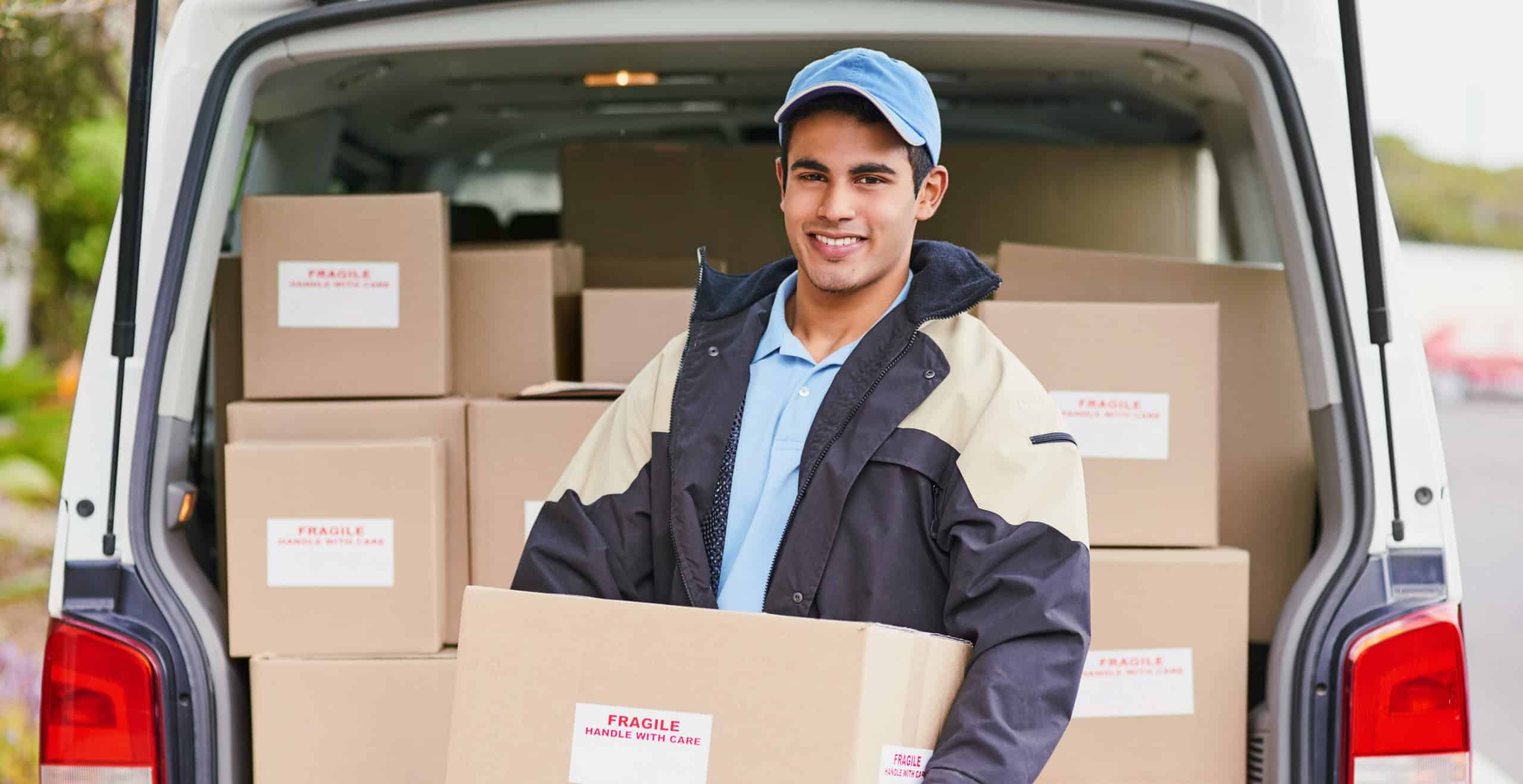How Route Optimisation Helps to Satisfy Same and Next-Day Delivery Demand

In an age where consumers expect speed, convenience, and transparency, same and next-day delivery have become non-negotiable for many businesses. Whether it’s retail, food and beverage, or B2B logistics, companies are under mounting pressure to meet fast delivery demands while controlling costs and maintaining customer satisfaction. Achieving this delicate balance hinges on one key factor: route optimisation.
🚚 The Growing Pressure of Fast Delivery Expectations
E-commerce giants have transformed customer expectations. Today, shoppers anticipate receiving their orders in hours, not days. Infact, reports show that 78% of consumers now expect same-day and next-day priority deliveries, and 25% of shoppers have indicated they would shop elsewhere if a retailer couldn’t deliver within 3.5 days
This rising demand has led to complex logistics operations. Businesses must manage limited delivery windows, traffic congestion, multiple drop-off points, and fluctuating order volumes – all within tight timeframes. It’s a logistical juggling act, and without intelligent planning, it becomes unsustainable. That’s where route optimisation steps in.
🧠 What Is Route Optimisation?
Route optimisation is the process of planning and scheduling delivery routes in the most efficient and effective way possible. It involves using intelligent software to calculate the best paths for vehicles to take when delivering goods or services – taking into account a wide range of real-world variables and constraints.
While the concept might sound straightforward, the execution is anything but. Delivery networks are complex and constantly shifting. Factors like changing traffic conditions, vehicle capacities, road restrictions, and customer time windows make manual planning impractical, especially when handling dozens or even hundreds of daily deliveries. Route optimisation software removes this complexity by automating the planning process and generating data-driven delivery schedules that reduce mileage, maximise vehicle usage, and ensure timely arrivals.
Unlike simple mapping tools that show the shortest or fastest route between two points, route optimisation goes several steps further. It calculates the most efficient way to complete multiple deliveries with multiple vehicles, balancing operational efficiency with customer satisfaction. It also considers the specific needs of each delivery – some may require timed drop-offs, specialist handling, or compliance with local delivery regulations.
Modern route optimisation platforms use advanced algorithms and artificial intelligence to process large volumes of data in real-time. This enables logistics teams to not only plan routes but also:
– Re-optimise on the fly if there’s a disruption or delay
– Manage multiple drivers and delivery zones simultaneously
– Predict more accurate ETAs
– Track performance and identify areas for improvement
For businesses offering same and next-day delivery, route optimisation is essential. These services require speed, accuracy, and adaptability – all of which are difficult to achieve with manual methods or basic navigation tools.
Solutions like MaxOptra take the process further by offering cloud-based route planning that’s user-friendly, scalable, and fully integrated with existing business systems. By automating the heavy lifting of route planning and providing real-time visibility and control, these systems enable delivery operations to keep pace with customer expectations while staying cost-effective and efficient.
⚡ Why Route Optimisation Is Essential for Same and Next-Day Delivery
Same and next-day delivery demand speed and precision. Traditional static route planning or manual scheduling simply can’t keep up with this pace. Route optimisation software, such as MaxOptra, plays a pivotal role in enabling agile delivery models. Here’s how:
1. Faster and Smarter Scheduling
Automated route planning tools can generate optimal delivery schedules in minutes rather than hours. By instantly assessing all possible route combinations, the system chooses the most efficient option, even as new orders come in or cancellations occur. This is particularly important for same-day services, where planning must be done quickly and accurately to meet tight deadlines.
2. Real-Time Re-Optimisation
Deliveries simply sometimes don’t go to plan – traffic delays, last-minute orders, or driver issues can throw off even the best schedules. Advanced platforms provide real-time re-optimisation, adjusting routes on the fly to avoid disruptions and ensure timely deliveries. This level of responsiveness is crucial in fast-paced delivery environments.
3. Improved Delivery Density and Efficiency
One of the challenges of rapid delivery is maximising drop density – delivering to as many customers as possible in the shortest distance. Route optimisation helps consolidate orders geographically and time-efficiently, reducing empty miles and improving vehicle utilisation. For next-day delivery, this can significantly cut delivery costs and carbon emissions.
4. Transparent Communication with Customers
Today’s customers expect more than just fast delivery – they want to know exactly when their parcel will arrive. Route optimisation systems integrate with customer notification tools to provide accurate ETAs, live tracking, and delivery confirmation. With MaxOptra, for instance, customers can receive real-time updates via SMS or email, improving satisfaction and reducing failed deliveries.
5. Data-Driven Decision Making
Route optimisation isn’t just about mapping journeys – it’s also about gathering and analysing data. The best solutions will provide powerful insights into delivery performance, driver behaviour, and cost metrics. This allows businesses to refine processes continuously, forecast more accurately, and make informed strategic decisions.
✅ The Benefits of Route Optimisation for Delivery Operations
Adopting a robust route optimisation strategy doesn’t just solve the logistical challenge of getting goods from A to B – it can transform the overall efficiency, sustainability, and competitiveness of a delivery operation. In the context of same and next-day delivery, where time is of the essence, the benefits become even more pronounced.
Reduced Operational Costs
One of the most immediate advantages of route optimisation is a significant reduction in operational costs. Intelligent routing reduces unnecessary mileage, which in turn lowers fuel consumption and vehicle wear and tear. By ensuring each vehicle operates at or near full capacity and travels on the most efficient routes, businesses can also reduce the number of vehicles required to complete daily deliveries. This helps to keep fleet management costs lean without compromising service levels.
Enhanced Customer Satisfaction
Modern consumers expect speed and precision. Route optimisation helps delivery operations meet these expectations by ensuring drivers arrive within promised delivery windows and providing accurate ETAs. When integrated with customer communication tools, route optimisation systems can send real-time updates, allow live tracking, and notify customers of any unexpected delays. This level of transparency builds trust and reduces the number of missed or failed deliveries, improving the overall customer experience.
Increased Delivery Capacity
By refining route planning, businesses can serve more customers per vehicle and per shift, effectively increasing their delivery capacity without having to invest in more drivers or vehicles. This is especially important in high-volume environments, such as during seasonal peaks or promotional campaigns, where scalability is vital. Smarter use of existing resources enables businesses to scale flexibly in response to demand surges.
Improved Driver Productivity and Morale
Drivers are the backbone of any delivery operation. By providing clear, optimised routes and minimising wasted time in traffic or searching for addresses, route optimisation makes their day-to-day workload more manageable and predictable. With a user-friendly mobile app and dynamic route updates, drivers spend less time on admin or waiting for dispatch instructions, and more time completing deliveries efficiently. Happier, more productive drivers are less likely to churn, reducing recruitment and training costs in the long run.
Greater Agility and Resilience
The ability to adapt quickly to changes – be it a traffic accident, a last-minute order, or a vehicle breakdown – is critical in same and next-day delivery. Route optimisation tools offer real-time visibility of fleet performance and enable rapid re-optimisation of routes when the unexpected happens. This allows operations teams to respond proactively to disruptions, reducing delays and maintaining high service standards.
Sustainability and Lower Carbon Emissions
Environmental responsibility is becoming a key performance indicator for delivery services. By eliminating unnecessary journeys and improving delivery density, route optimisation contributes to lower fuel usage and reduced carbon emissions. For businesses aiming to meet sustainability targets or improve their ESG credentials, this is a practical and measurable win.
Informed Strategic Planning
Beyond day-to-day operations, route optimisation platforms provide a wealth of data on delivery performance, driver efficiency, route profitability, and customer satisfaction. These insights support strategic decision-making, from identifying areas for cost reduction to planning future fleet investments or expanding into new delivery territories.
🛠️ Key Features of Route Optimisation Solutions
Modern route optimisation software is designed to be flexible, intelligent, and highly integrative. It does more than generate routes – it acts as a central hub for delivery operations, bridging planning, execution, customer communication, and performance analysis. While each platform may differ slightly, most leading solutions share several core functionalities.
Dynamic and Automated Route Planning
Instead of relying on static schedules or manual planning, route optimisation platforms use algorithms to generate the most efficient delivery routes based on multiple inputs. These include time windows, delivery priorities, traffic patterns, vehicle capacities, and customer locations. The best solutions will generate routes within minutes, enabling rapid response to high order volumes typical of same and next-day delivery.
Real-Time Route Re-Optimisation
Traffic congestion, road closures, and last-minute order changes are part and parcel of daily logistics. A modern route optimisation tool can respond to these changes in real time. For example, MaxOptra allows operations teams to adjust routes on the fly, ensuring minimal disruption and helping drivers stay on schedule, even when plans shift unexpectedly.
Seamless Integration with Other Systems
Efficiency depends on seamless data flow between systems. Route optimisation software integrates with order management systems (OMS), warehouse management systems (WMS), ERP platforms, and eCommerce solutions. MaxOptra’s open API, for instance, allows for smooth integration, ensuring that order data is automatically pulled into the planning process and updates flow back into customer-facing platforms.
Real-Time Driver and Vehicle Tracking
Visibility is critical in managing delivery fleets, particularly when operating under tight timelines. Route optimisation platforms often include or integrate with telematics to provide real-time GPS tracking of vehicles. This allows operations teams to monitor progress, spot delays early, and keep customers informed with live tracking links. MaxOptra also offers a mobile app for drivers, which includes turn-by-turn directions, digital proof of delivery (POD), and route updates.
Customer Communication Tools
The end-customer experience is just as important as backend efficiency. Route optimisation solutions support automated communications such as ETA notifications, delivery reminders, and satisfaction follow-ups. MaxOptra’s customer notifications feature helps reduce failed delivery attempts and keeps recipients informed at every stage, which is particularly valuable for time-sensitive deliveries.
Reporting and Performance Analytics
Data-driven delivery operations are more effective and adaptable. Route optimisation platforms offer dashboards and reports that highlight key performance metrics such as on-time delivery rates, cost per drop, mileage trends, and driver performance. This enables continuous improvement and provides the evidence needed to justify investment in logistics infrastructure.
🧾 Conclusion
For businesses trying to meet ever-increasing delivery expectations, route optimisation is no longer a luxury – it’s a necessity. Whether you’re delivering fresh groceries within hours or next-day electronics, the ability to plan efficient, accurate, and flexible routes directly influences customer satisfaction and business profitability.
Solutions like MaxOptra empower logistics teams to embrace the speed and complexity of modern delivery without compromising on cost or quality. With intelligent planning, real-time adaptability, and clear communication, businesses can meet the pressures of same and next-day delivery – and even turn them into a competitive advantage.
❓ FAQs
What is the role of route optimisation in same-day delivery?
Route optimisation ensures that deliveries are assigned and scheduled in the most efficient way possible, considering all constraints and traffic conditions. This is critical in same-day delivery, where timing is tight and efficiency is essential.
Can route optimisation software handle real-time changes?
Yes, advanced solutions like MaxOptra support real-time route re-optimisation. This allows for on-the-fly adjustments in response to traffic delays, cancellations, or new orders.
How does route optimisation reduce delivery costs?
By improving delivery density, reducing miles driven, and enhancing driver efficiency, route optimisation directly cuts fuel, labour, and vehicle maintenance costs.
Is route optimisation suitable for small delivery operations?
Absolutely. Cloud-based platforms scale easily, making them suitable for businesses of all sizes. Even small fleets benefit from improved planning, fewer missed deliveries, and happier customers.
What industries benefit most from route optimisation?
Any industry involved in delivery logistics can benefit – retail, food and beverage, field services, healthcare, and wholesale distribution, to name a few. The common factor is the need for timely, efficient, and reliable delivery.
Contact us today to excel in fast delivery for your customers
Maxoptra System
© MaxOptra, 2023. Privacy Policy and Cookies




